PREVIOUS
Indian Railways - Facts
January 11 , 2018
2925 days
54344
0
Indian Railways - Facts
- - - - - - - - - - - - - - -
- Indian Railways is the biggest Government institution of India.

- Indian Railways is the biggest railway system of Asia.
- Indian Railways is the largest railways network to be operated by a single government and is the world’s third largest network with a total length of 127,760 kms.
- The Indian Railways is the world’s eighth largest employer with a total of 1.4 million employees.
- The history of Indian Railways goes back to the year 1853 when the first train steamed off from Bombay to Thane, a distance of 34 kms.

- Lord Dalhousie was the Governor General of India at that time. The train was running by coal Rail Engine.
- The first passenger train in South India ran from Royapuram/ Veyasarapady (Madras) to Wallajah Road (Arcot) on 1 July 1856, for a distance of 60 miles.

- The British started the railway system to exploit the resources of India and carry the raw material from different ports of India to the ports for export the material to England and when the manufactured goods came to the ports from England then disbursed these goods all over the country within a very short time.
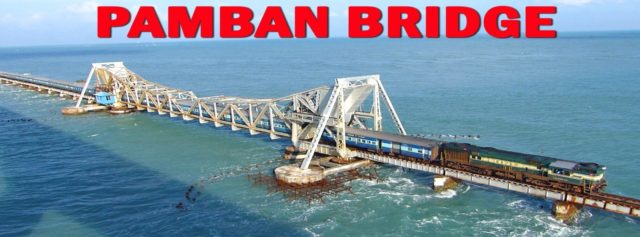
- During the freedom struggle the freedom fighters opposed the extension of railway network in the country because the railway system used by the British for fulfilling their interests and were in the exploitation of India and their own interests.
- After independence there is a new chapter started in the development of Railway as Government of India established it as a separate Ministry of Railways.

- The Electric engines cause no pollution and its performance is better than Diesel Engine. Now total length of Indian Railways is about 65,000 kilometers long railway track in which almost 15,000 kilometers are electric lines.
- The railway network is predominantly a broad gauge Small stretches of the network use Meter and Narrowgauges. All the electrified lines use 25 kv AC.
- There are almost 7,500 small and big Railway Stations in India.
- Railways also help the Indian people in their trade as almost 30-40% goods are carried by Railways in different parts of country.
- The Indian Railway was Nationalised in 1950.
Unique Facts

- The first railroad was constructed by two Indians – Jaganath Shunkerseth and Jamsetjee Jeejeebhoy.
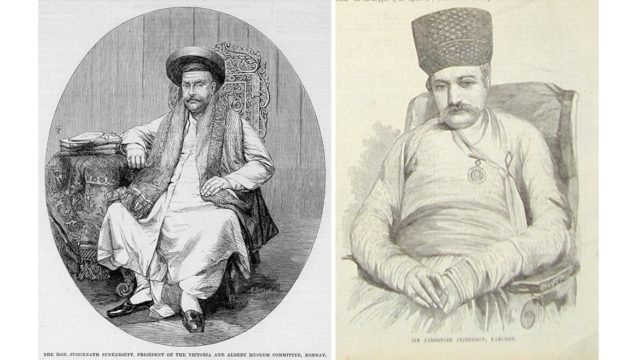
- According to distance between the Railways Lines, there are three systems operating in the Country.
- Broad Gauge – Distance 1.67m
- Meter Gauge – Distance 1.00m
- Narrow Gauge – Distance 0.762 or 0.610 m

- Siliguri Junction is one of the three railway stations that serve Siliguri in Darjeeling district in the Indian state of West Bengal. The other two stations are: Siliguri Town and New Jalpaiguri. It is the only station of India having all three Track Gauges i.e.; Broad Gauge, Metre Gauge & Narrow Gauge.
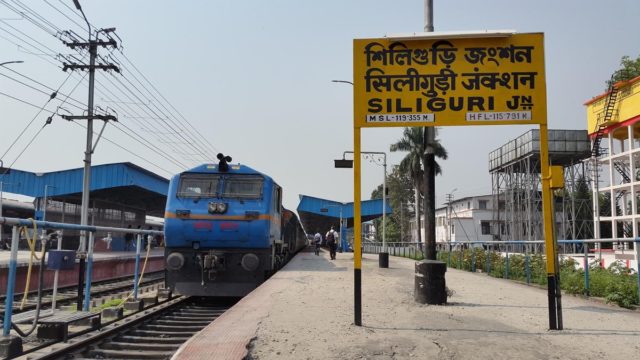
- The second train in India was run in 1854 in between Howrah and Hoogly.
- Indian Railway Board was established in 1905, and the headquarters of Indian Railways is situated in New Delhi.

- The railways functions on an operating ratio of 94%, that is, it spends 94 paisa on every rupee that it earns.
- The first railway budget was presented in 1925.
- On 14 April 1951, the Southern Railwaywas created.
- In 1902, the Jodhpur Railway became the first to introduce electric lights as standard fixtures. In 1920, electric lighting of signals was introduced between Dadar and Currey Road in Bombay.
- Railway electrification in India began with the inauguration of the first electric train between Victoria Terminusand Kurla in Bombay on 3rd Feb, 1925
- First Long Distance Electric Train of India : Deccan Queen runs between Bombay and Pune on 1930.
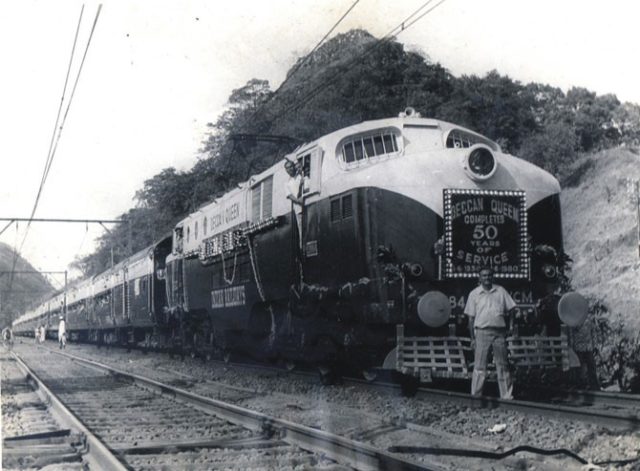
- Indian railway has the second biggest electrified system in the world after Russia.
- On 31 March 2017, Indian Railway announced that the entire rail network in the country will be electrified by 2022.
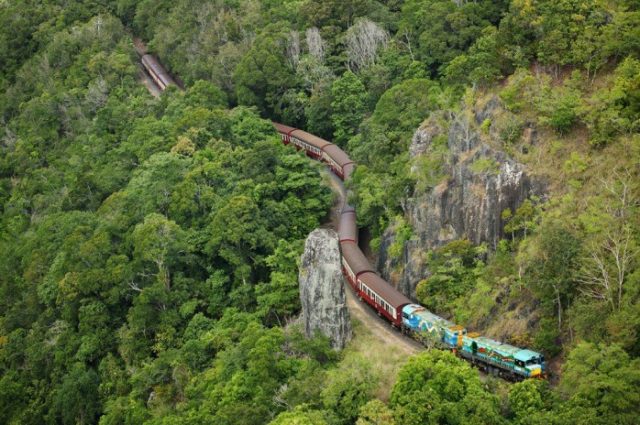
- In 1986, computerized ticketing and reservation was introduced in India, for the first time, at New Delhi
- Credit cards were started being accepted for booking tickets and reservations in some stations also in 1999.
- Indian Railways is divided into 17 zones, which are further sub-divided into divisions.
 India’s Railway Zone’s
India’s Railway Zone’s
| Railway Zone | Code | Zone Headquarters | Route Length (km) |
| Northern Railway | NR | Delhi | 6,968 |
| North Eastern Railway | NER | Gorakhpur | 3,667 |
| Northeast Frontier Railway | NFR | Guwahati | 3,907 |
| Eastern Railway | ER | Kolkata | 2,414 |
| South Eastern Railway | SER | Kolkata | 2,631 |
| South Central Railway | SCR | Secunderabad | 6,137 |
| Southern Railway | SR | Chennai | 6,844 |
| Central Railway | CR | Mumbai | 3,905 |
| Western Railway | WR | Mumbai | 6,182 |
| South Western Railway | SWR | Hubballi | 3,177 |
| North Western Railway | NWR | Jaipur | 5,459 |
| West Central Railway | WCR | Jabalpur | 2,965 |
| North Central Railway | NCR | Allahabad | 3,151 |
| South East Central Railway | SECR | Bilaspur | 2,447 |
| East Coast Railway | ECoR | Bhubaneswar | 2,572 |
| East Central Railway | ECR | Hajipur | 3,628 |
| Konkan Railway | KR | Mumbai | 738 |
- Longest Railway Zone in India : Northern Railway
- The Chittaranjan Locomotive Worksin Chittaranjan makes electric locomotives. The Diesel Locomotive Works in Varanasi makes diesel locomotives. The Integral Coach Factory in Perambur, makes integral coaches.
- At present there are three international express - Samjhauta express (Delhi to Lahore), Thar express (Jodhpur to Karachi), Maitree express (Kolkata to Dhaka)
- 'Samjhuata Express' (also called the Friendship Express) - the First International Border train- that runs between India (Delhi and Attari) and Pakistan (Lahore) was started almost 40 years ago on July 22, 1976.It was discontinued on Jan 1, 2002 in the wake of the terrorist attack on the Indian Parliament on Dec 13, 2001. Service resumed Jan 15, 2004. It was again suspended following the assassination of Benazir Bhutto on Dec 27, 2007.
- The Thar Express runs fromJodhpur (India) to Karachi (Pakistan)
- The Maitree Express re-established its service between the Bangladeshi capital of Dhaka with Kolkata, the capital of the Indian state of West Bengal, in 2008 after being closed for 43 years. In 2017 a second service, the Bandhan Express, was inaugurated connecting Kolkata with the Bangladeshi city of Khulna.

- Over a million non-Muslims were evacuated by rail during the peak period from August 27 to the end of November 1947 and over 1.3 million Muslims in the opposite direction. These refugee trains were known as "India Special" or "Pakistan Special."
- Each express train is identified by a five-digit number, the first digit as 1 and 2 for long-distance Express trains. If the first digit is 0, then the train is a Special. The first digit as 5 denotes a passenger train. The second digit indicates the zone that operates the train, the third the division within the zone, and the last two digits are the train's serial number.
- For super-fast trains, the second digit is always 2 (the first remains 1 or 2), the third digit is the zone, the fourth is the division and only the last digit is the serial number within the division
- Discounted tickets are available for senior citizens(above sixty years) and some other categories of passengers including the differently abled, students, sports persons, persons affected by serious diseases, or persons appearing for competitive examinations.
- Foreign tourists can buy an Indrail Pass, which is modelled on the Eurail Pass, permitting unlimited travel in India for a specific time period.
- Bholu or Bholu the guard elephant is the mascot of Indian Railways. The mascot, a cartoon of an elephant holding a signal lamp with green light in one hand, was initially designed for Indian Railways' 150th year commemoration events and was unveiled on 16 April 2002 in Bangalore. Later in 2003, Indian Railways decided to permanently retain it as the official mascot.

- The Mumbai Monorail, which opened on 2 February 2014 is the first operational monorail system used for rapid transit in independent India.

- Two historical railway elements are included in the UNESCO’ World Heritage site list – the Chhatrapati Shivaji Terminus, and the Indian Mountain Railways.
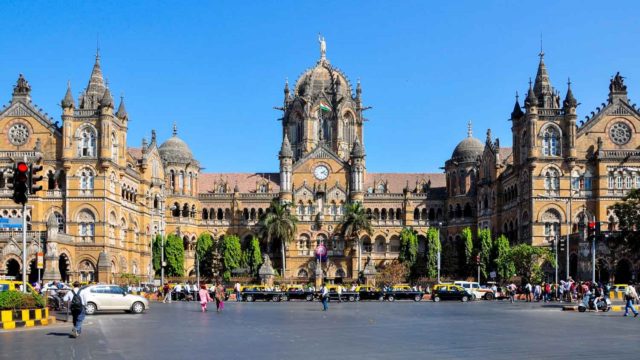
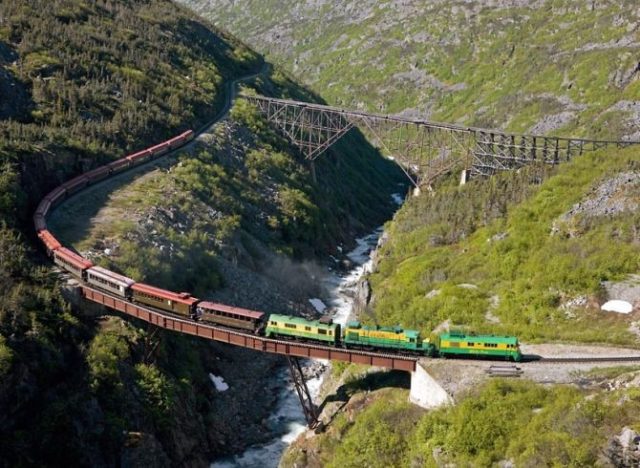
- It was more than 50 years after the formation of Indian Railways that trains finally had toilets, thanks to a passenger named Okhil Chandra Sen who wrote an angry letter to a railway office in 1909 complaining about their absence.
- Railway Staff Colleges is Located at Barodara (Baroda).
- India has eight Railway Museums – in Delhi, Pune, Kanpur, Mysore, Kolkata, Chennai, Ghum and Tiruchirappalli. Out of these, the National Railway Museum in Delhi is the largest rail museum in Asia.
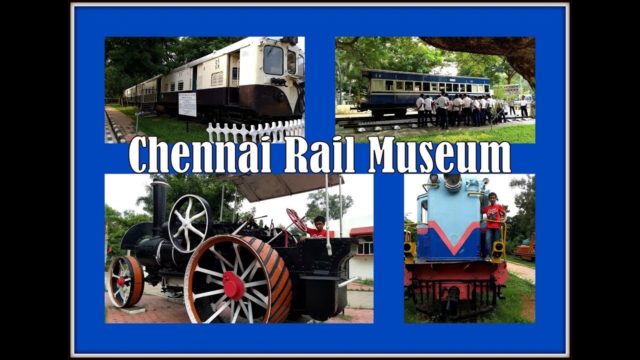
- The National Rail Museum at New Delhi was set-up in 1977.
- First Railway Bridge : Dapoorie Viaduct on the Mumbai-Thane route
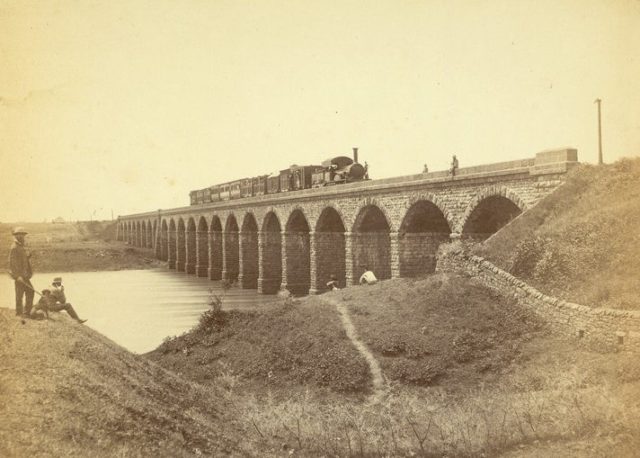
- First Rail Tunnel : Parsik Tunnel
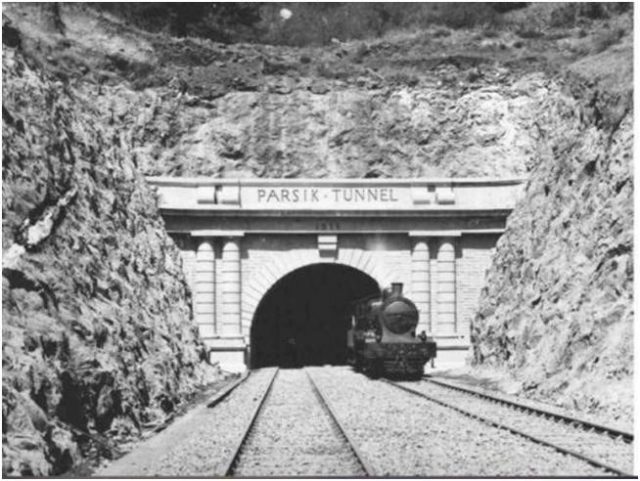
- First Ghats Covered by the Rail lines : Thal and Bhore Ghats
- First Underground Railway : Calcutta METRO
- India’s first underwater tunnel is Howrah-Kolkata Metro - under the Hooghly river.
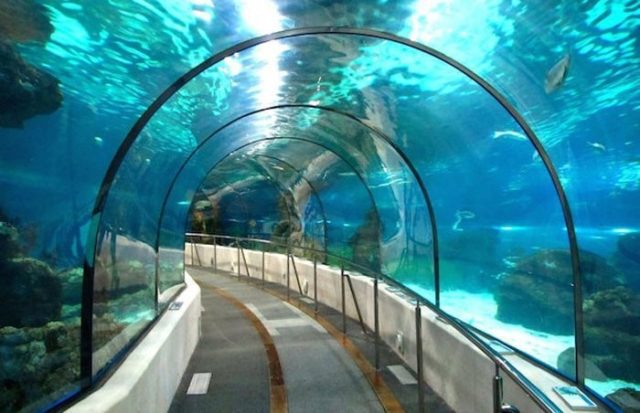
- Ahmedabad Mumbai Central Double Decker Express is India’s first double Decker train.

- The diamond crossing (dubbed so by railways themselves), in Nagpur, is one-of-its-kind, from where trains go East, West, North and South.

- Indian Railways owned the longest railway platform in the world at Kharagpur with a length of 2,733 feet. Now, breaking the record, Gorakhpur station has recently taken its place with a span of 4,430 feet.

- Longest Railway Bridge : Vembanad Rail Bridge of Kerala is the longest rail bridge in India with the total length of 4.62 km.
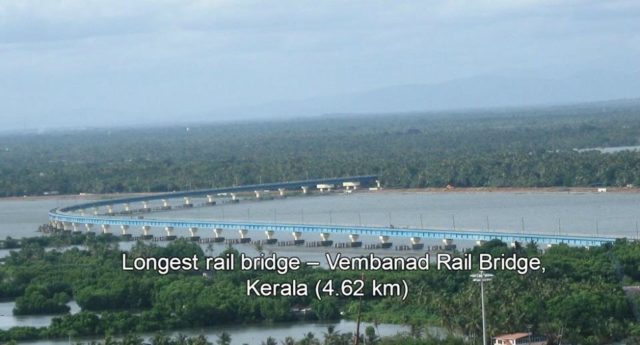
- Ernakulam Hazrat Nizamuddin Duronto is the longest running duronto express in Indian Railways
- The shortest run is taken by a few scheduled services between Nagpur and Ajni – a total of 3 kms
- The second longest train in the country is “Himsagar Express” which runs between Jammu Tawi to Kanyakumari covers a total route of 3726 Kilometers and passes through Ten States.
- The Nilgiri Express with an average speed of 10 kmph has the distinction of being India’s slowest train.

- Trivandrum Hazrat Nizamuddin Rajdhani Express covers a distance of 528 km without a single stop(6.5 hrs).
- Train with Maximum Number of Halts : Howrah-Amritsar Express (115 halts)
- Train crosses the largest number of states: Navyug express between Mangalore and Jammu Tawi
- The largest distance entirely in one state: Kolhapur-Gondia Maharashtra Exp,
- Guwahati-Trivandrum Express is the most unreliable train in the country. The average delay in the journey is 10-12 hours.
- Northern most railway station Baramulla in Jammu and Kashmir
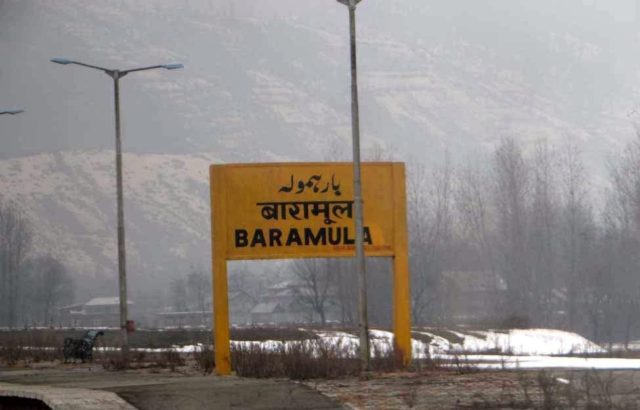
- East most railway station Ledo in branch line ( Tinsukia district, Assam).

- Southern most railway station Kanyakumari in Tamil Nadu.

- Western most station Naliya near Bhuj in Gujarat
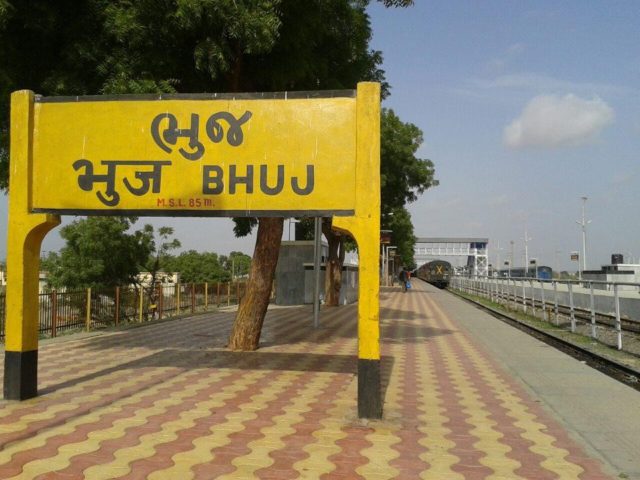
- The record for the longest station name: Venkatanarasimharajuvaripeta on the Arakkonam-Renigunta section near Chennai.
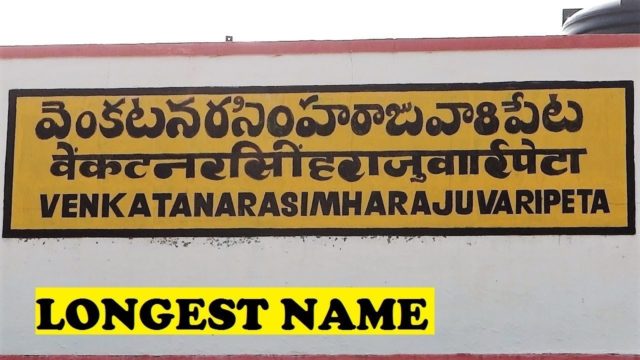
- The shortest station names are Ib, near Jharsuguda in Odisha and Od, near Anand in Gujarat.
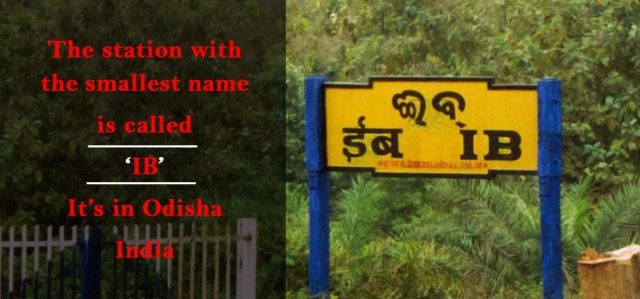
- The railway station of Navapur is built in 2 states; one half of it is in Maharashtra and the other half is in Gujarat.

- Srirampur and Belapur are two different stations in Ahmednagar district of Maharashtra. They are both situated at the same point on the railway route, but are located on opposite sides of the track.
- Shortest distance between stations: Safilguda and Dayanand Nagar stations on the Secunderabad, 170m apart.
- Mathura junction has the maximum number of routes emerging from it.
- The busiest junction in the country is Howrah junction in Kolkata with as many as 974 trains stopping there daily.
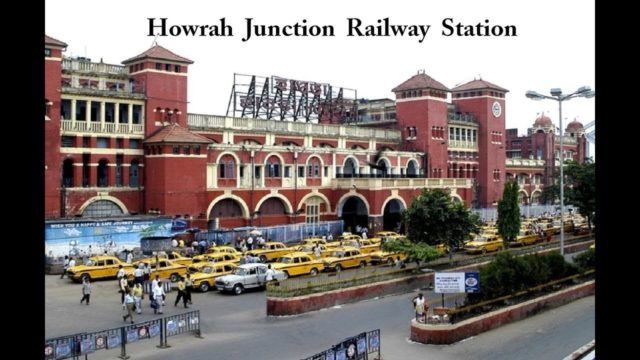
- Largest railway complex in India Howrah Railway Station (West Bengal)
- The New Delhi Main Station, having the world's largest route relay interlocking system, has a place in the Guinness Book of Records.
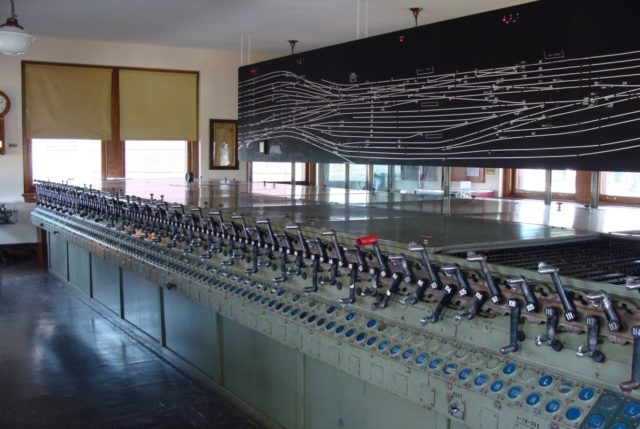
- Mughal Sarai is the largest Railway Yard of Indian Railway
- Indian Railways launched an awareness campaign train on World AIDS Day, December 1, 2007, called the Red Ribbon Express.
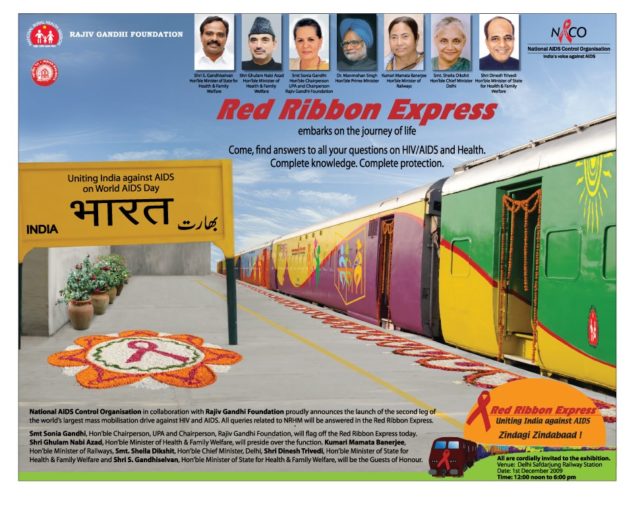
- Shakuntala Railway- Private Railway which is still functional in India
- the train takes around 20 hours to cover the 190km distance between Yavatmal and Achalpur via Murtazapur in Amravati district, Maharashtra.
- It was laid by British government in India, for laying railway tracks to be used for transporting cotton from Vidarbha and soon it was being used to ferry passengers too.
- These railway lines are still continued as narrow gauge, The track is owned by a private company but the trains are run by Indian Railways
- Recently, Union Railway Ministry has sanctioned 1,500 crore for converting the narrow gauge Yavatmal-Murtizapur-Achalpur railway line into broad gauge.
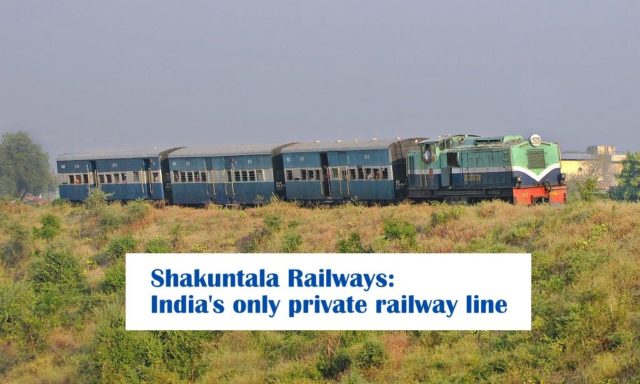
|
Sl.no |
Train |
Description |
| 1 | Gatimaan Express | · It is a semi high speed train that runs between Delhi and Agra in India. · It operates at a speed of 160 km/h and is the fastest train in India. · The train takes a travel time of 100 minutes to cover 188 km journey from Hazrat Nizamuddin to Agra Cantonment railway station. |
| 2 | Shatabdi Express | · The Shatabdi trains are air-conditioned, inter city trains for travel during daytime. Unlike the Rajdhani or Duronto Expresses, all Shatabdi expresses make a round trip on same day. · The Bhopal Shatabdi Express is the second fastest train in India, between New Delhi and Agra cantonment. This train travels at an average speed of 90 km/h and touches top speed of 150 kilometres per hour. |
| 3 | Rajdhani Express | · These are air-conditioned trains linking major cities to New Delhi. · They have high priority and are one of the fastest trains in India travelling at a maximum speed of around 130–140 km/hour (81–87 mph). · They are long-distance high-speed trains. |
| 4 | Duronto Express | · These are the non-stop (except for technical halts) point to point rail services introduced for the first time in 2009. · They connect the metros and major state capitals of India and were introduced to travel as fast or faster than the Rajdhani Express. |
| 5 | AC Express | · These are fully air-conditioned trains linking major cities in the country. · They have high priority and are one of the fastest trains in India, travelling at about 130 km/hour. |
| 6 | Tejas Express | · Same as Shatabdi Express, these are fully air-conditioned single floor express trains. But unlike the Shatabdi Express these trains are sleeper trains used for long distance. |
| 7 | Double Decker Express | · Same as Shatabdi Express, these are fully air-conditioned two floor express trains. · These trains are used for day time travel. |
| 8 | Uday Express | · Same as Double Decker Express, these are fully air-conditioned two floor express trains. |
| 9 | Humsafar Express | · These are fully AC 3 tier coaches trains. It is also called semi-luxury train. · These train provide so many facilities like LED screen display to show information about stations and train speed. |
| 10 | Garib Rath | · 3-tier AC berths. The maximum speed is 130 km/hour. · It is called as Poor people’s Chariot. |
| 11 | Yuva Express | · These trains were started along with Duronto Express trains to provide air conditioned travel to youth of the country. · Sixty percent of the seats of these trains were reserved for passengers between 18 – 45 years of age. |
| 12 | Jan Shatabdi Express | · Jan Shatabdi Express are more affordable variety of the Shatabdi Express, which have both AC and non-AC classes. · The maximum speed is 110 km/hour. |
| 13 | Sampark Kranti Express | · These are a series of trains which provide super fast Express-like connectivity to the national capital of Delhi. |
| 14 | Kavi Guru Express | · These trains were introduced in honor of Rabindranath Tagore. |
| 15 | Vivek Express | · These trains were introduced to commemorate the 150th birth Anniversary of Swami Vivekananda in 2013. · One of the Vivek Express trains, the one from Dibrugarh to Kanyakumari and it is the longest route (4273 km) on the Indian Railways network, in terms of distance and time, and is the 16th longest in the world |
| 16 | Rajya Rani Express | · These trains were introduced to connect state capitals from important cities in that state. |
| 17 | Mahamana Express | · It is the new version of coaches of Indian Railways with modern benefits and facilities. · It is a tri-weekly superfast train service which runs between the city of Varanasi and New Delhi. |
| 18 | Intercity Express | · These trains were introduced to connect important cities for short routes. · These appear in both Superfast Express speed and Express speed category. · The famous legendary Intercity Express is Deccan Queen |
| 19 | Antyodaya Express | · These are fully non reserved Super fast trains. · Antyodaya Express operates on peak routes. · These trains run to reduce the pressure on other trains on that route. |
| 20 | Jan Sadharan Express | · These are fully non reserved Express trains. · Jan Sadharan Express operates on peak routes. · These trains run to reduce the pressure on other trains on that route. |
| 21 | Superfast Express/Mail | · These trains travel at a speed greater than 100–110 km/hour. |
| 22 | Express/Mails | · These are the most common kind of trains in India. · They have more stops than their super-fast counterparts, but they stop only at relatively important intermediate stations. |
| 23 | Fast Passenger trains | · These are slow trains that stop at most or every station along the route and are the cheapest trains. · The trains generally have unreserved seating accommodation .These trains travel at about 40–80 km/h. |
| 24 | Suburban trains | · These trains operate in the urban areas of Mumbai, Delhi, Kolkata, Chennai, Hyderabad, Lucknow and Pune. |
| 25 | Metro Rails | · These trains are designed for city transport. The first metro constructed was Kolkata Metro for the city of Kolkata. · Now metro railway services are found in New Delhi, Mumbai, Chennai, Bangalore, Kochi, Jaipur, Lucknow, and Hyderabad. |

Konkan Railway’s
- Konkan Railway Corporation Limited (KRCL) is a Public Sector Undertaking (PSU) under the Ministry of Railways.

- It is headquartered at CBD Belapur in Navi Mumbai.
- The company started its full operations of trains on 26 January 1998.
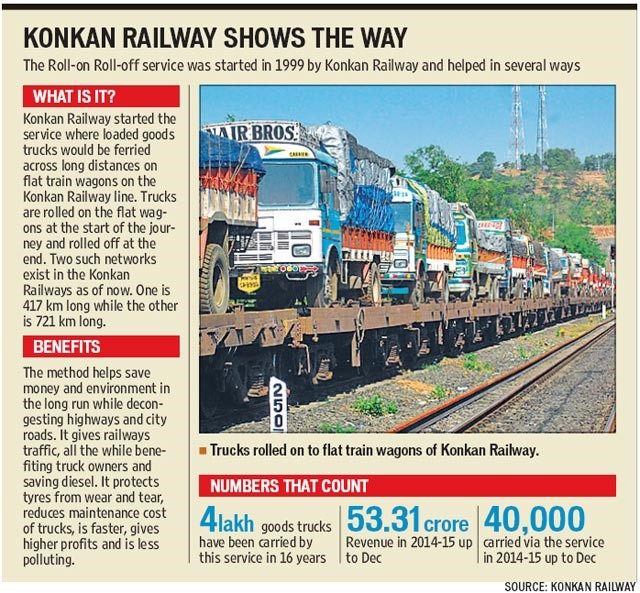
- The first passenger train which ran on Konkan railway tracks on 20 March 1993 between Udupi and Mangalore.
- The route is a single-line track, and is not electrified. The total length of the line is about 738 kilometres. Although it has been designed for high-speed traffic of 160 kilometres per hour.
- Roha (Maharashtra) is the Northern starting point of konkan railways and Thokur (Karnataka) is the southern end point of konkan railways.
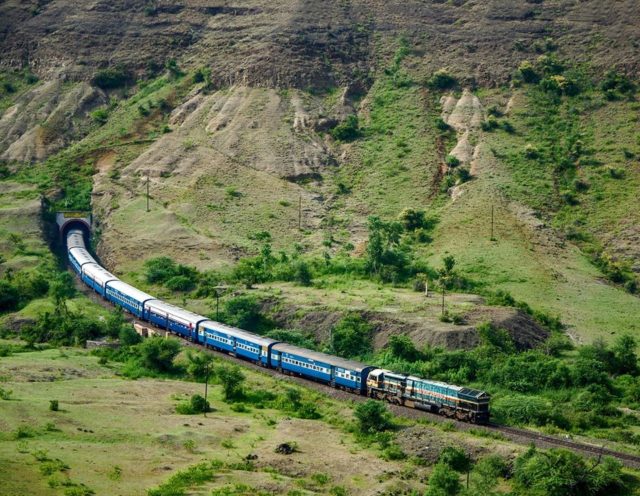
- The route is open to both freight and passenger traffic. The line runs parallel to the Arabian Sea, offering views along the coast.
- The Konkan railway route intersects National Highway 66 (Erstwhile NH-17 and a part of NH-47) at many places.
Mountain railways of India
- The concept of mountain railways was conceived by the British Raj in order to establish control over the Himalayas and other mountain ranges within India.
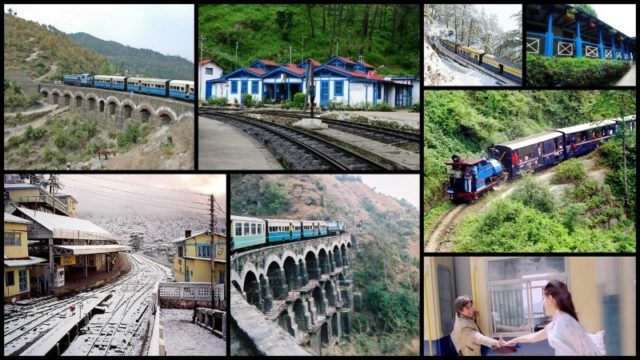
- In 1844, Sir John Lawrence, embraced the idea of making the mountains more accessible, particularly to the British military. In a proposal called Hill Railway, the British planned for a system of train stations across the Indian subcontinent.
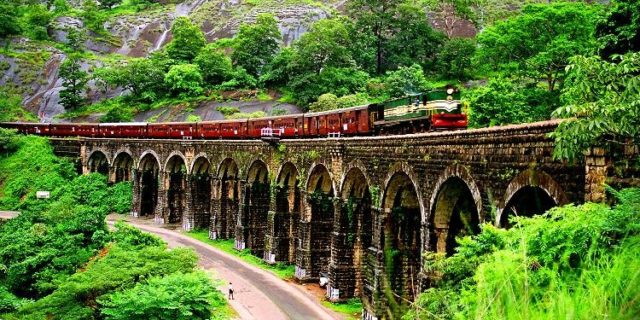
- India’s Mountain Railways are established in 19th and early 20th These railway routes were built on India’s mountain ranges. Those all the trains are run from British period to till date.
- It also included Kashmir railway and its operation started since 2005.
- In these mountain railway lines, four routes were situated on North India’s Himalayan Region.
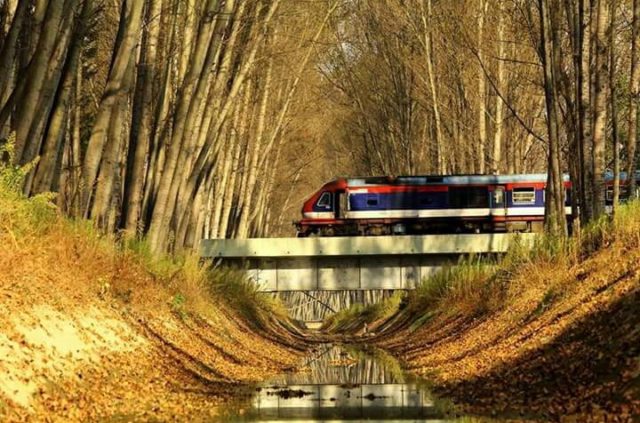
- These are Darjeeling Himalayan Railway (1881), Kalka – Shimla Railway (1898), Kangara Valley Railway (1924) and Kashmir Railway (2005).
- Another two routes are Nilgiri Mountain Railway and Maharastra’s Matheran Mountain Railway. These two were situated on South India’s Western Ghats Region.
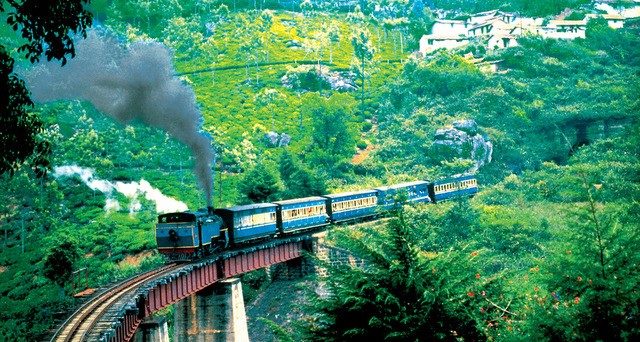
- The three routes are together have been titled the Mountain Railway’s of India under UNESCO World heritage site. These were Darjeeling Himalayan Railway, Nilgiri Mountain Railway and Kalka Shimla Mountain Railway.
- In 1999, the Darjeeling Himalayan Railway was the first to be recognized by UNESCO and placed in the World heritage site. It was the second rail line declared as a World heritage site in the world. The first railway line was Austria’s Semmering Railway.
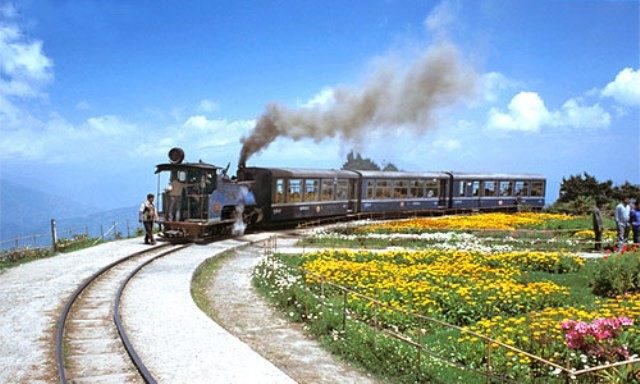
- Ghum railway station of the Darjeeling Himalayan Railway (West Bengal) is the highest railway station in India. It is situated at an altitude of 2,258 metres (7,407 ft).
- The Nilgiri Mountain Railway was declared as UNESCO World Heritage site in 2005. Between Mettupalayam and Coonoor, the line uses the rack and pinion system to climb the steep gradient. Thus Nilgiri Mountain Railway is the only rack railway in India.
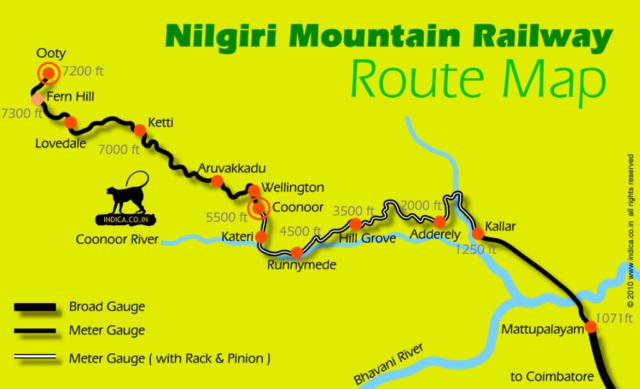
- The Kalka-Shimla Mountain Railway was declared as a UNESCO World Heritage site in 2008.
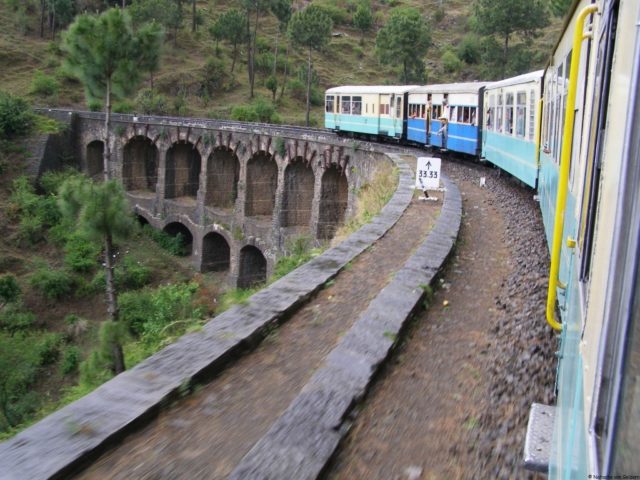
- The Jammu–Baramulla line is currently under construction while some railways are proposed to be built in the future, such as Bilaspur–Mandi–Leh line, Jammu–Poonch line, Srinagar–Kargil–Leh line, and Chota Char Dham Railway.

- The Jammu–Baramulla railway line is a broad gauge railway line being built to connect the Kashmir Valley in the Indian state of Jammu and Kashmir with the rest of the country. The railway line starts from Jammu and will travel for 345 km (214 mi) to Baramulla. It will link the state's winter capital, Jammu, with the summer capital, Srinagar, and beyond. On 4 July, 2014 , the train journey on Udhampur-Katra line was officially inaugurated.

- The Pir Panjal Railway Tunnel or Banihal railway tunnel is an 11.215 km (7 mile) railway tunnel located in Pir Panjal Range of middle Himalayas in Jammu and Kashmir, India, north of Banihal town.It is India's longest railway tunnel and Asia's fourth longest railway tunnel. The rail tunnel reduces the distance between Quazigund and Banihal by 17 km (from 35 km by road to 17.5 km by train).
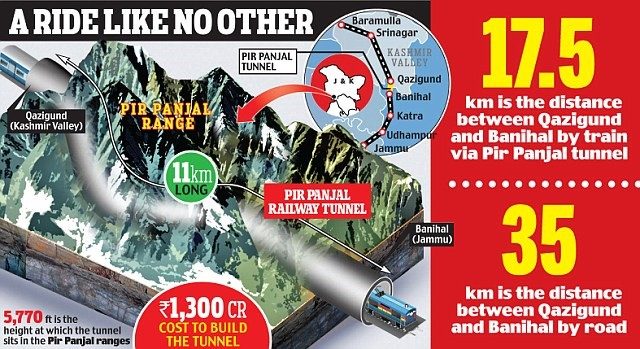
- 85-km long Seikan Tunnel in Japan is the longest; 28 km long Taihang Tunnel in China is the second longest and 21 km long Lulianghsan Tunnel in Shanxi, China is the third longest.
- The Chenab Bridge is a railway steel and concrete arch bridge under construction between Bakkal and Kauri in the Reasi district of Jammu and Kashmir in India. When finished, the bridge will span the Chenab River at a height of 359 m (1,178 ft) above the river, making it the world's highest rail bridge. The bridge is scheduled to open in 2019.
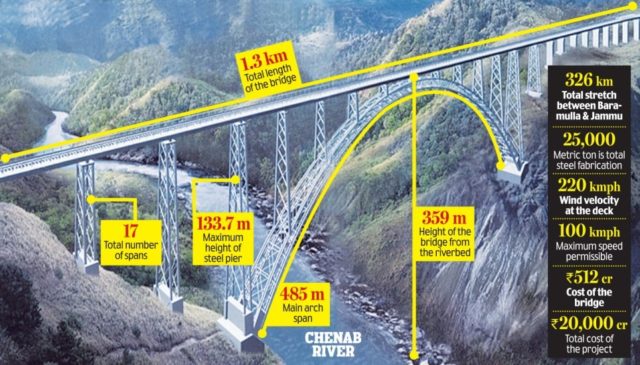
- The bridge forms the crucial link in the 111-km stretch between Katra and Banihal which is part of the Udhampur- Srinagar-Baramulla section of the Kashmir Railway project. Five times higher than Qutabminar and way taller than the Eiffel tower.
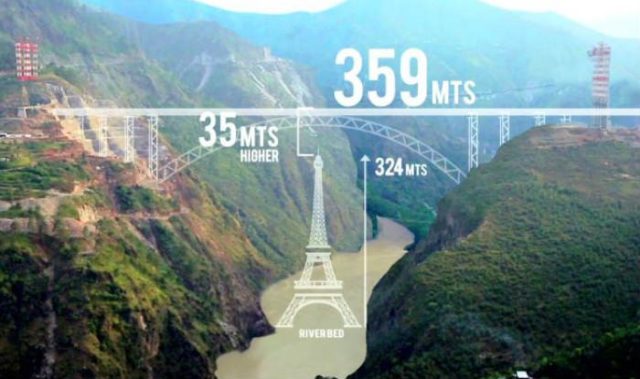
- The Lumding–Sabroom section is a railway line under Lumding railway division of Northeast Frontier Railway zone of Indian Railways. It is a single 1,676 mm (5 ft 6 in) broad gauge track from Lumding in Nagaon District of Assam state to Agartala in West Tripura district of Tripura state.

- The 43 km long 1,676 mm (5 ft 6 in) segment from Agartala southwards to Udaipur, Tripura was completed in 2016 and became operational on 23 January 2017. The remaining 70 km long track to Sabroom at the bank of Feni River at Bangladesh border is expected to be completed by 2020.

Proposed Mountain railways
- Bilaspur–Mandi–Leh line is a proposed railway track that is planned to connect Bilaspur in Himachal Pradesh to Leh in Ladakh region of Jammu and Kashmir state of India. Bilaspur–Mandi–Leh line is expected to become the highest railway track in the world by its completion overtaking the current record of China's Qinghai–Tibet Railway.

- Jammu–Poonch line is a proposed railway line from Jammu Tawi station via the Historic City of Akhnoor to Poonch via Kaleeth-Doori Dager-Chowki Choura-Bhambla-Nowshera-Rajouri.
- Srinagar–Kargil–Leh line is a proposed railway line from Srinagar station via the town of Kargil to Leh by Indian Railways.
- Chota Char Dham Railway has two different Y-shaped railways, with a total of the following four individual rail lines, Doiwala-Dehradun-Uttarkashi-Maneri Gangotri Railway is a 131 kilometer long route, Uttarkashi-Palar Yamunotri Railway is a 22 kilometer long route making a “Y” fork connection at Uttarkashi from the Gangotri railway above.
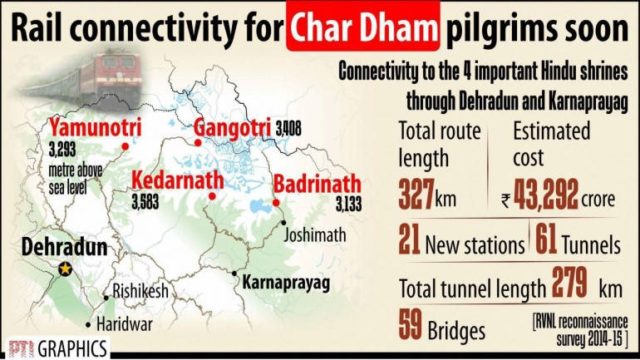
- Karnaprayag-Saikot-Sonprayag Kedarnath Railway is a 99 kilometer-long route and Saikot-Joshimath Badrinath Railway, a 75 kilometer long route making a “Y” fork connection at Saikot from the Kedarnath railway above.
- Rishikesh-Karnaprayag Railway is also an under construction new railway link extension from the exiting Rishikesh railway station to Karnaprayag.
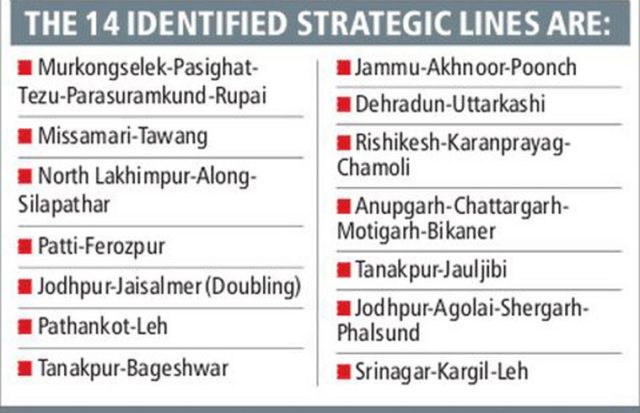
India’s Mountain Railways
| Sl.No. | Name | Length (km) | Built on | Type |
| 1. | Darjeeling Himalayan Mountain Railway-Toy Train. (Runs between Siliguri and Darjeeling) | 88 | 1881 | Narrow Gauge |
| 2. | Nilgiri Mountain Railway (Runs between Mettupalayam and Ooty) | 46 | 1908 | Meter Gauge |
| 3. | Kalka-Shimla Mountain Railway (Runs between Kalka and Shimla) | 96 | 1903 | |
| 4. | Matheran Mountain Railway (Runs between Neral and Matheran) | 20 | 1907 | Narrow Gauge |
| 5. | Kangra Valley Mountain Railway (Runs between Pathankot and Joginder Nagar) | 164 | 1929 |

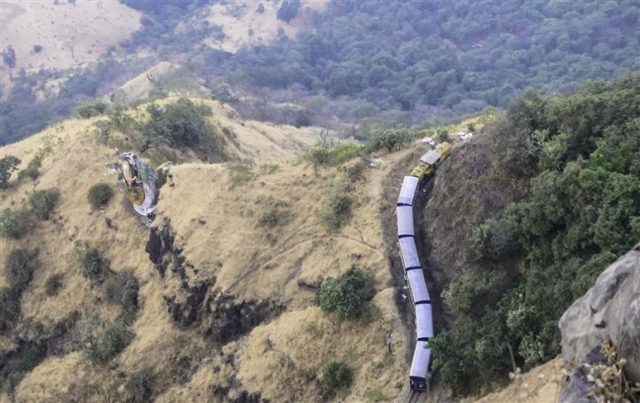
Luxury Trains in India
- The Indian Railways, along with the Indian Railway Catering and Tourism Corporation, provide a wide range of luxury rail travel in India.

- The Fairy Queen is a steam locomotive, plying between the Indian capital of New Delhi and Alwar, in Rajasthan.
- The oldest working Indian locomotive still in use is the Fairy Queen, that runs between New Delhi and Rajasthan, which worked with a steam engine. It was built in 1855 by the British firm Kinston, Thompson & Hewitson for the British firm East India Railways.
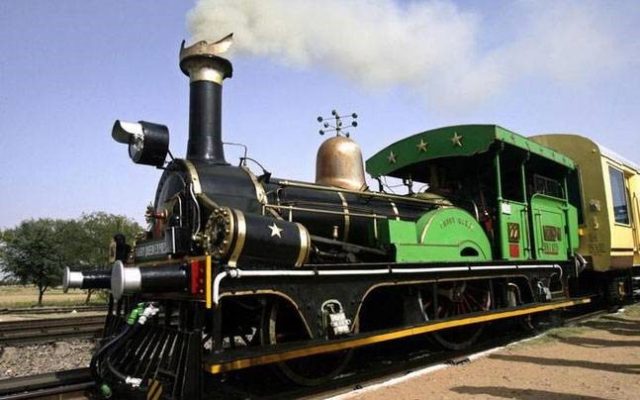
- The Fairy Queen was certified by the Guinness Book of Records in 1998 as the world's oldest steam locomotive in regular operation.It was also awarded the Heritage Award from the International Tourist Bureau, Berlin.
- The Palace on Wheels is a luxury train. It was launched by the Indian Railways to promote tourism in Rajasthan.

- The Royal Orient is an Indian luxury tourism train that runs between Gujarat and Rajasthan, covering important tourist locations in the two states.
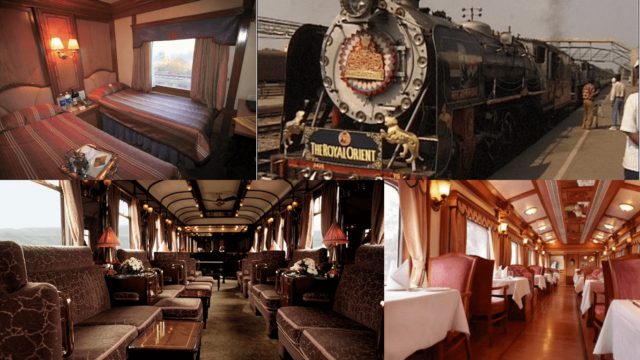
- The Deccan Odyssey is a special luxury train based on the model of Palace on Wheels to boost tourism on the Maharashtra route of the Indian Railways.

Post Views:
54344
Leave a Reply
Your Comment is awaiting moderation.


